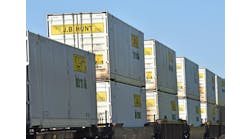What makes Pareto’s Principle so fundamental is that even if the numbers aren’t exactly on target, the relationship of the few governing the many remains a constant. Whether 80% of your business comes from 20% of your customers or not, you will almost never find an even distribution of demand.
How does it look when you view your supply chain through the Pareto lens?
Though seldom phrased in terms of the famous 80:20 rule, the question does come up in balancing supply chain risk. With a number of carriers engaged in contract negotiations with their unions, how many logistics professionals discovered their core-carrier strategy put much of their freight in the hands of carriers that were directly affected by the negotiations? Those transportation managers who did, typically reported a rebalancing as contract deadlines approached. The financial analysts refer to it as freight diversions, while others might prefer to call it risk mitigation.
The same thing is happening as the longshore contract approaches on the US West Coast. Importers and exporters are examining all-water routes to and from East Coast and Gulf ports—and even increased use of Canadian and Mexican ports to provide back up in case of disruption on the West Coast.
With new labor laws going into effect in China and pressure for the Chinese government to raise interest rates, adjust foreign exchange rates, and bring various working and business conditions into line with Western “standards,” the underlying cost structure of sourcing in China is changing. Coupled with increasing fuel costs and other factors affecting transport costs and service in the lanes moving goods from Asian sources to US and European consuming markets, the financial and even political risks are shifting. Does the Pareto number applied to those sourcing arrangements still look good, or is it time to rebalance those flows as well?
In a political year in the US, the rhetoric is hot and heavy over what to do to help the US economy to grow. There’s a degree of instability that derives from that type of political debate close to home as well. Current and future trade agreements and policy could change dramatically under a new Administration.
In light of all this tension and turmoil, another theory or principle is worth considering. The concept of yin and yang, the unity of opposites, implies this tension can be productive. An example is that a weak US dollar may make imports more expensive, but it opens the door for exports. With much global trade denominated in US dollars, the flow of goods can shift to consuming markets where the currency is strong against the dollar.
Put another way, that glass which is half full has room for additions. Companies that have built agile supply chains and are watching for these sourcing and market opportunities will have a chance to grow. In the coming months, your job will be to unify some of these opposing forces.


